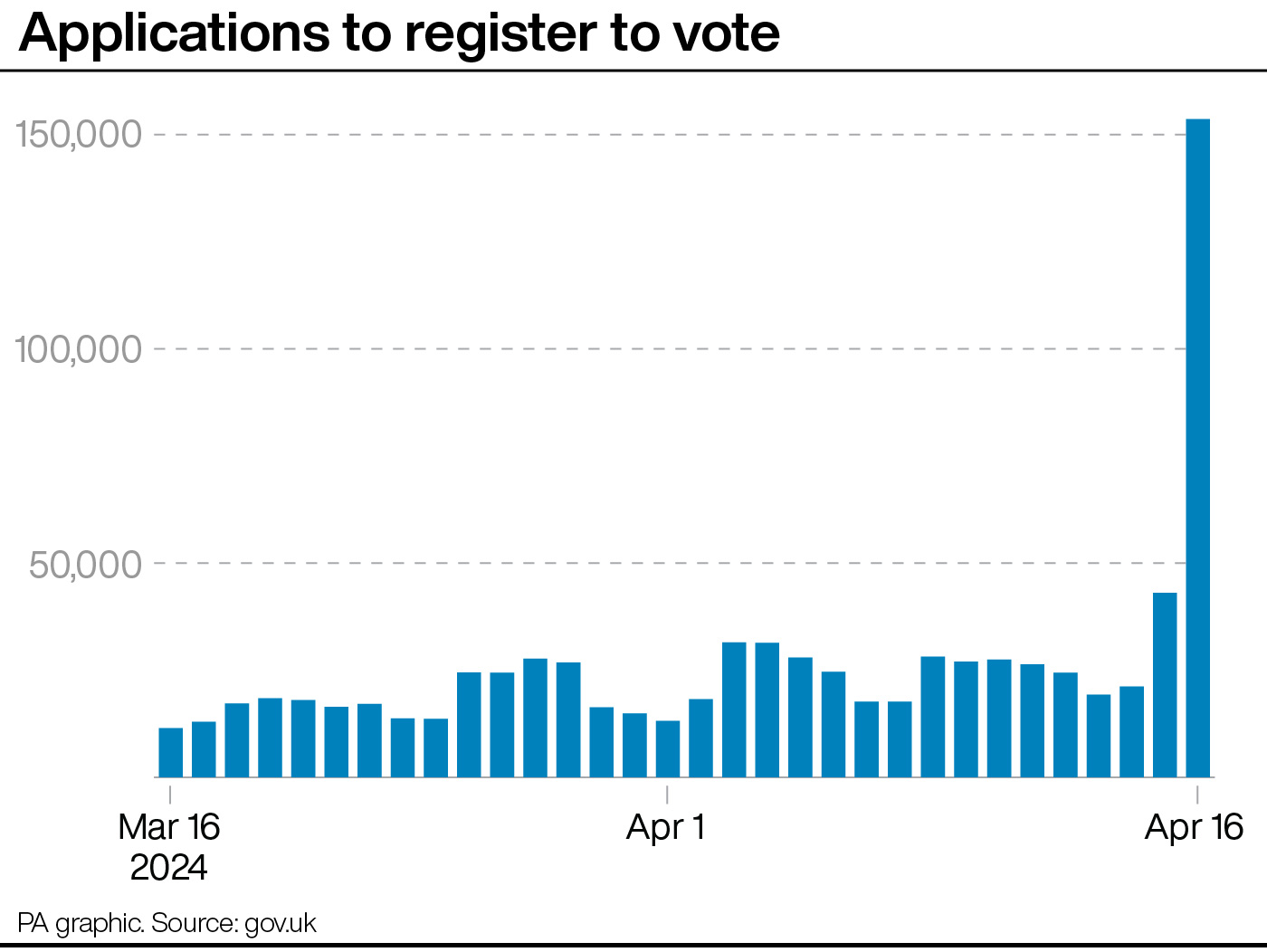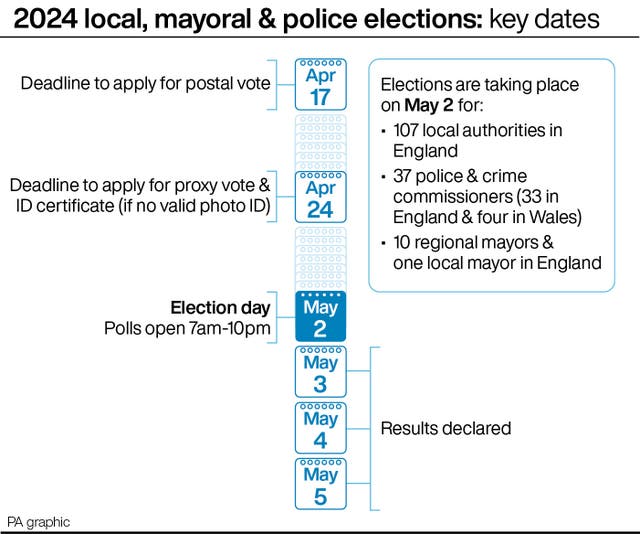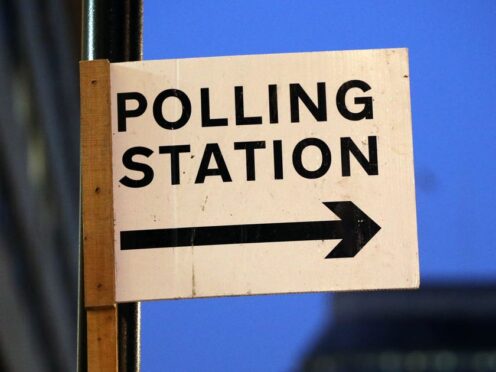Applications to vote jumped sharply on Tuesday, the last day people were able to register ahead of next month’s local, mayoral and police elections.
A total of 153,614 applications were submitted, the highest for a single day so far this year and more than three times the previous high of 43,037, which was set on Monday.
An average of 45,059 applications to vote were made per day in the week to April 16, up from 24,906 the previous week and 21,234 a fortnight ago, Government figures show.

Every voter in England and Wales will be able to cast a ballot in at least one type of election on May 2.
Nearly 2,700 council seats in England are up for grabs across 107 local authorities, while 37 police and crime commissioners in England and Wales will also be chosen.
Polls are also taking place to elect some of the most high-profile mayors in the country, including Greater Manchester, London and the West Midlands.
Not everyone applying to vote will be a new voter, as some may already be registered while others might not be eligible to take part.
But the spike in applications suggests a growing interest in the elections, which are now a little over two weeks away.
Around 44 million people are estimated to be eligible to vote on May 2, but as many as seven million people are either incorrectly registered or missing from the register entirely, according to the Electoral Commission, which oversees all elections in the UK.
Meanwhile, anyone who wants to use a postal vote for the elections must send their application to their local council by 5pm on Wednesday.
The deadline to apply to vote by post or postal proxy in the 2 May elections is 5pm this afternoon.❗📅 You can register for a postal vote here here: https://t.co/y18b3FVynr
— Electoral Commission (@ElectoralCommUK) April 17, 2024
All voters intending to cast a ballot on May 2 will not only need to be registered but also show a form of photo identification at the polling station.
Not all types of photo ID will be accepted, but a passport, driving licence or blue badge are valid.
Anyone without the correct identification will need to apply for a voter authority certificate by 5pm on April 24, which can be done online at gov.uk/apply-for-photo-id-voter-authority-certificate.
Photo ID rules were brought in as part of the Elections Act 2022, with the Government saying they were necessary to combat the risk of in-person voter fraud.
The requirements were first enforced at last year’s local elections in England.
A report by the Electoral Commission suggested at least around 14,000 people – 0.25% of voters – did not vote in those elections after being unable to show an accepted form of photo ID at their polling station.

Some 35,155 applications for a voter authority certificate (VAC) have been made so far this year, including 1,474 on Tuesday, according to analysis by the PA news agency.
The average number of VAC applications per day stood at 943 in the week to April 16, up from 866 the previous week and 548 a fortnight earlier.
Just 7% of VAC applications in the most recent week came from people under 25, while 3% came from those aged 75 and over.
Applications from 55 to 64-year-olds accounted for 29% of the total, followed by 45 to 54-year-olds (22%), 35 to 44-year-olds (17%), 25 to 34-year-olds (12%) and 65 to 74-year-olds (9%).
